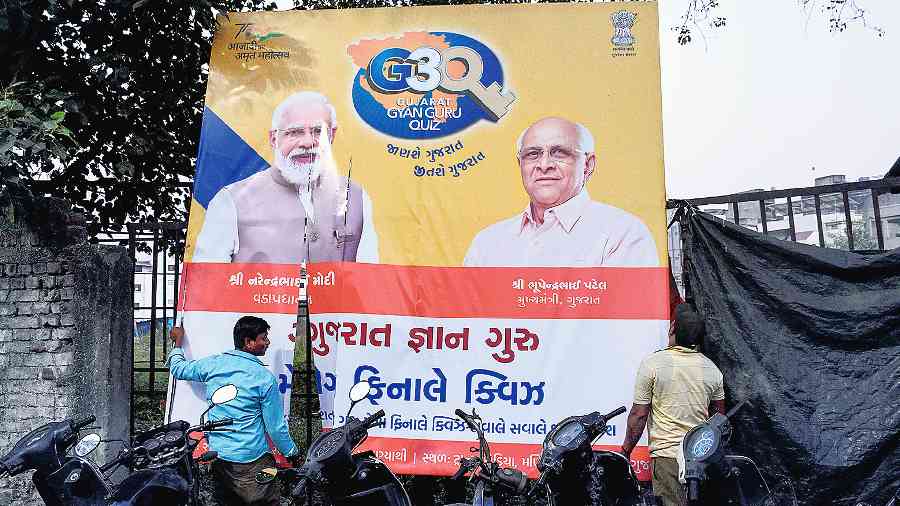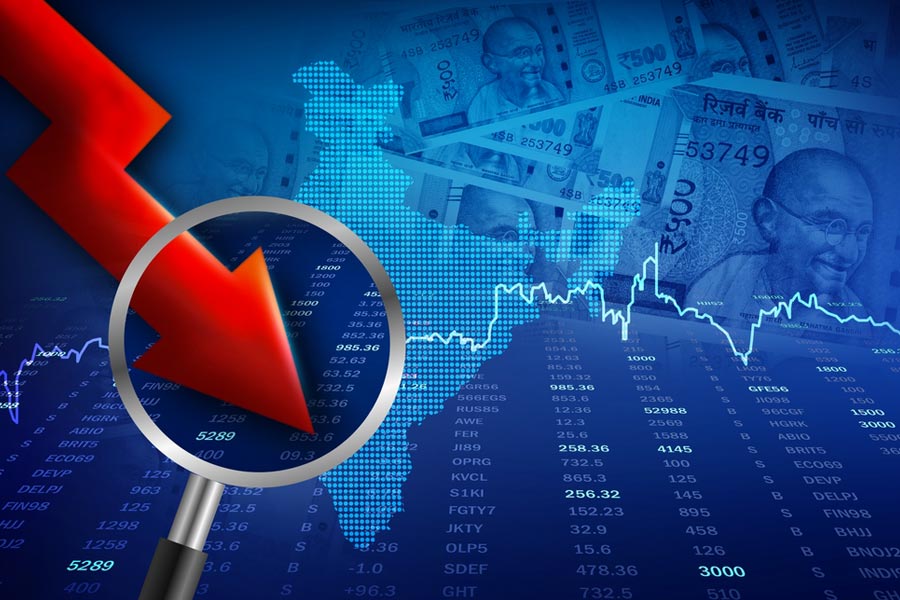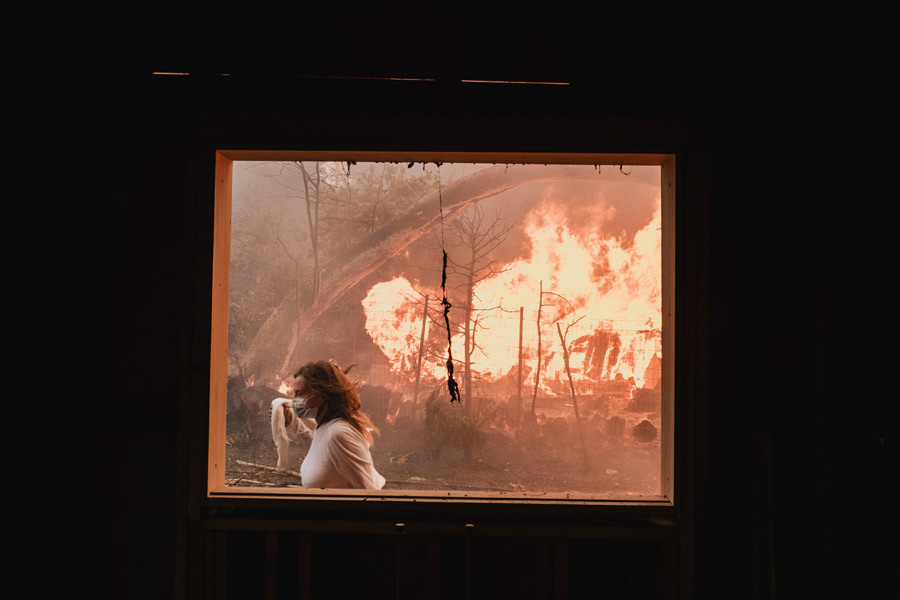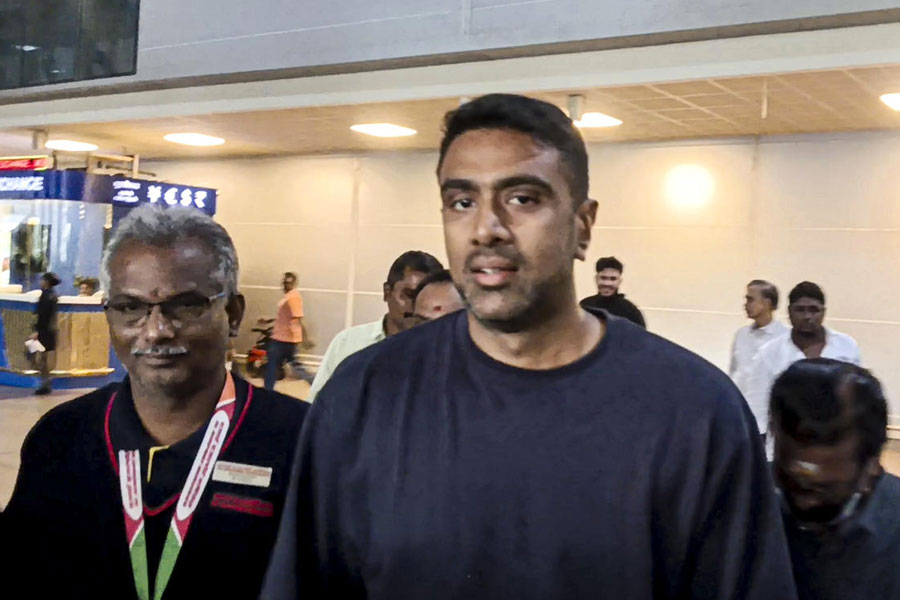A sense of suppressed anxiety ran in the BJP as the dates for the Gujarat elections were announced on Thursday, triggered by a trend of the party’s tally of seats dipping progressively since 1995, barring the exception of the post-pogrom polls of 2002.
The prestige of Prime Minister Narendra Modi will be at stake in the December Assembly polls like never before as he leads from the front to prove that his “magic” continues to charm the voters of his home state despite ground reports of voter fatigue.
The challenge for Modi this time is not only to safeguard the much vaunted “Gujarat model” but also to show that its halo has turned brighter, as he heads towards the national elections less than two years from now.
In the 2017 polls, Modi and his team had their hearts in their mouths as the votes were counted and those tense moments continue to haunt the party as he prepares for this election.
The BJP had then managed to just about hold on to power, winning 99 of the 182 seats, its poorest performance since the saffron surge in the state began in 1995. Putting up a spirited fight, the Congress had bagged 77 seats last time.
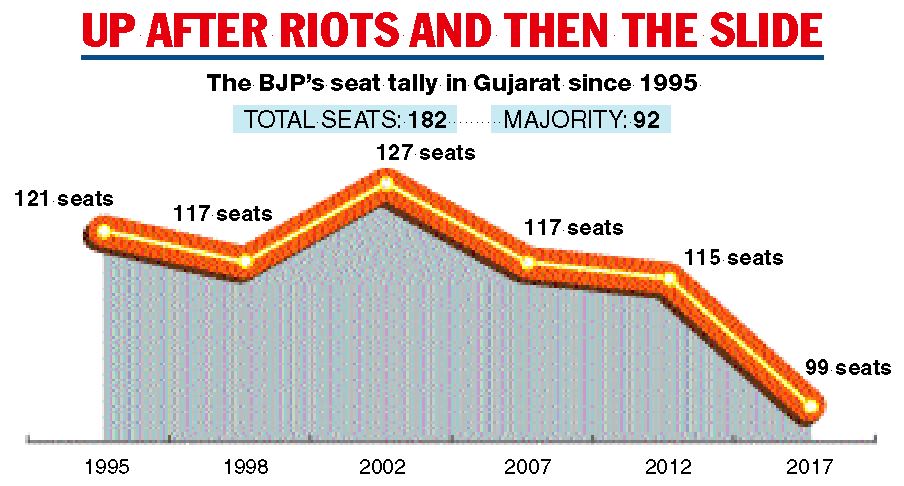
The 2017 poll result was the continuation of a trend since the BJP came to power in Gujarat in 1995 with 121 seats. In the mid-term polls of 1998 due to a split in the BJP, the party returned to power with 117 seats.
The BJP’s peak performance came in the December 2002 elections under Modi, held in the bitterly polarised atmosphere after the riots. The Modi-led BJP bagged 127 seats. Modi, who was made chief minister replacing Keshubhai Patel in 2001, had dissolved the Assembly and gone for early polls.
Barring this exception, the BJP’s seat kitty has shrunk progressively in subsequent polls. Despite Modi’s firm personality cult of a “Hindu Hriday Samrat” in the 2007 elections, the party’s tally came down to 117 seats. In 2012, it was 115 even as Modi projected himself as the prime ministerial face.
The downward trend turned worrisome for the BJP in 2017, the first election with Modi as Prime Minister. “If the trend continues in this election too, then we could be in danger,” a BJP leader said, explaining the reason for the extraordinary effort being put in by Modi. The majority mark in the Gujarat Assembly is 92.
“The task before Modiji and all of us is to reverse this trend and reverse it substantially,” the leader said, adding that “it is not an easy task”.
BJP managers said the upcoming election had become more challenging because of the entry of the Aam Aadmi Party in the traditional bipolar BJP-vs-Congress scenario.
“We don’t know how the AAP factor will play out. Our reports from the ground suggest that the AAP would cut both ways — denting both our vote base and also of the Congress,” another BJP leader said.
The BJP’s aim of reversing the trend and winning Gujarat handsomely hinges on the AAP weaning away the votes of the Congress more than that of the saffron party.
There, however, is no surety of things unfolding the BJP’s way with the AAP buzz centred in the urban areas in the south and the Saurashtra region. The urban areas, fairly large in Gujarat, have been the traditional stronghold of the BJP while the Congress’s strength lies in the rural and tribal regions.
Amidst these calculations, the bridge collapse in Morbi on the eve of the polls has dealt a blow to the perception of Modi’s “Gujarat development model” and come as a “bad omen”, many party leaders fear.

